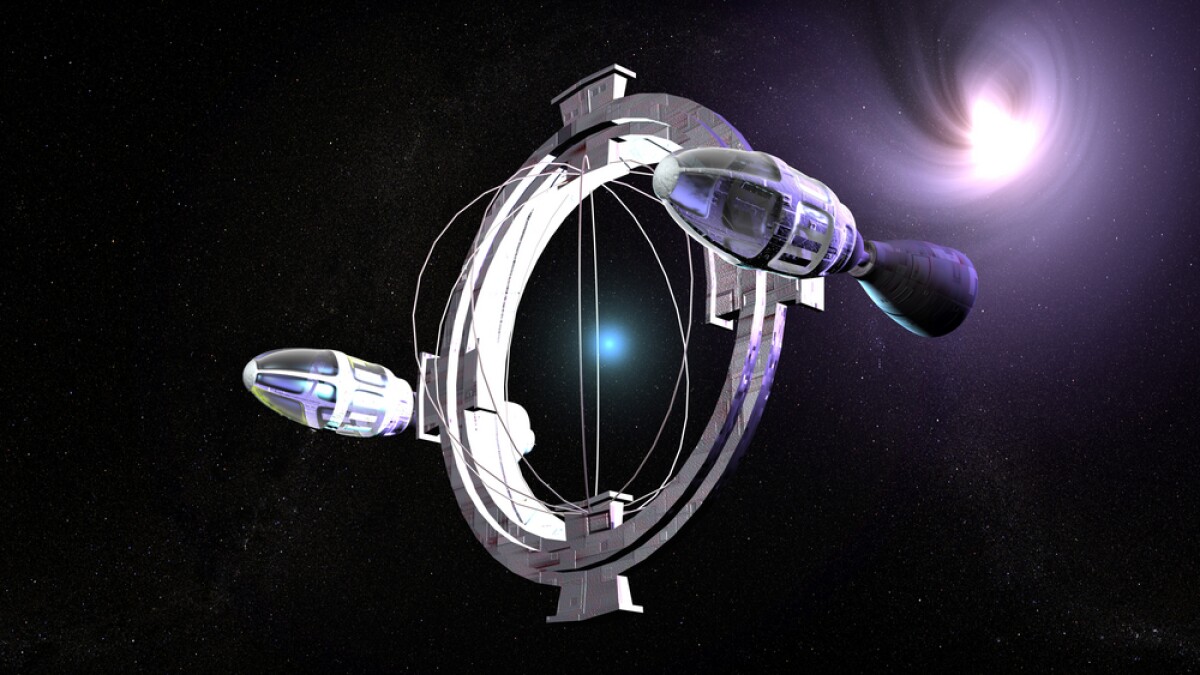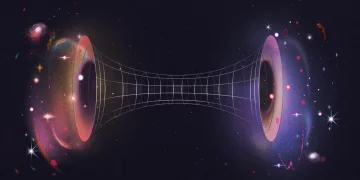Introduction
The universe, vast and mysterious, has long intrigued human minds. In our quest to understand the cosmos, one concept repeatedly emerges: the “physical horizon.” This term, as elusive as the stars themselves, refers to the fundamental limits we encounter in our exploration of space and time. These horizons—whether they be the Event Horizon of a black hole or the cosmological limits imposed by the speed of light—seem to impose severe constraints on our understanding and exploration of the universe.
Yet, are we truly bound by these horizons? Is there hope for breaking free from these constraints, or are they an immutable feature of our existence? In this article, we explore the nature of physical horizons, their implications for science and exploration, and whether human ingenuity can overcome these formidable barriers.
Understanding Physical Horizons
To understand the potential for overcoming these boundaries, we must first comprehend what a physical horizon is. In physics, horizons are boundaries beyond which certain events or information cannot affect an observer. These horizons come in various forms, from the event horizons of black holes to the cosmic horizons imposed by the universe’s expansion. Let’s look at a few key types:
1. Event Horizon (Black Holes)
The most famous type of horizon is the event horizon. This is the boundary surrounding a black hole, beyond which nothing—not even light—can escape. It marks a region where gravitational forces are so intense that escape is impossible, effectively sealing off the inner workings of the black hole from the outside universe. Any object that crosses the event horizon is inexorably drawn into the singularity at the center, where the laws of physics as we know them break down.
2. Cosmological Horizon (The Expanding Universe)
On a much grander scale, the cosmological horizon arises due to the expansion of the universe. As space expands, distant galaxies recede from us at speeds faster than the speed of light, causing a “horizon” beyond which we cannot observe or receive information. This horizon is not a physical barrier, but a limit of observational reach. It limits how much of the universe we can see or interact with.
3. Particle Horizon (Observable Universe)
The particle horizon is a measure of the furthest distance from which light (or other signals) could have traveled to an observer since the beginning of the universe. This horizon defines the observable universe. Beyond this distance, the light from objects has not had enough time to reach us since the Big Bang, meaning we are constrained in terms of what we can observe about the cosmos.

The Constraints Imposed by Horizons
These various horizons impose different kinds of limitations. At the black hole event horizon, no matter or information can escape. This results in an ultimate loss of connection to the rest of the universe. For the cosmological horizon, the expansion of the universe effectively renders distant galaxies forever unreachable, as they move away from us faster than the speed of light.
But do these constraints reflect a hard, unbreakable wall? Or can they be circumvented by new technology or theoretical breakthroughs?
Are Horizons Truly Unbreakable?
The limitations imposed by physical horizons may seem absolute at first glance, but physics offers us some fascinating possibilities. While these constraints are firmly grounded in current understanding, they are not necessarily unchangeable. Let’s examine a few ideas that suggest we may not be entirely bound by these horizons.
1. The Concept of Wormholes
One potential way of circumventing the event horizon is through the theoretical existence of wormholes—hypothetical tunnels in spacetime that could provide shortcuts between distant parts of the universe. According to Einstein’s theory of general relativity, wormholes could connect two distant points in spacetime, offering a potential way to bypass the event horizon of black holes or the vast distances between far-flung galaxies.
However, wormholes are highly speculative, and we have yet to find any empirical evidence of their existence. Furthermore, even if they do exist, their stability and practicality for use in space travel are still the subject of intense debate.
2. The Speed of Light and Faster-than-Light Travel
The most famous constraint imposed by physical horizons is the speed of light. Nothing in the universe can travel faster than light in a vacuum, a fundamental principle in Einstein’s theory of relativity. This limit sets a strict boundary on how far we can travel in a given amount of time, and thus limits our ability to explore the universe.
But could we find ways around this speed limit? One possibility lies in the Alcubierre drive, a theoretical concept that involves manipulating spacetime itself to create a “warp bubble.” In this bubble, the fabric of spacetime is contracted in front of a spacecraft and expanded behind it, allowing the ship to effectively move faster than light without violating relativity. While still highly speculative and requiring exotic forms of energy, such ideas challenge our conventional understanding of travel and physical horizons.
3. Quantum Entanglement and Information Transfer
One of the most mind-bending aspects of modern physics is the phenomenon of quantum entanglement, in which two particles become so intimately connected that the state of one can instantaneously influence the state of the other, regardless of the distance between them. This “spooky action at a distance” seems to defy the constraints of physical horizons, as information is transmitted faster than the speed of light.
While quantum entanglement does not allow for faster-than-light communication in the traditional sense, it suggests that there may be ways in which information or influence can transcend the limits set by classical physics. This opens up intriguing possibilities for future technologies and communication systems, though much work remains to be done to understand how to harness it practically.

Expanding Horizons Through Technology
Beyond theoretical breakthroughs, advances in technology might also push the boundaries of what we can achieve. The spacefaring ventures of the past few decades have demonstrated the incredible potential of human ingenuity to overcome natural constraints. Consider the following examples:
1. Space Probes and the Voyager Mission
The Voyager missions sent humanity’s farthest-reaching probes into the cosmos, with Voyager 1 currently beyond the influence of the Sun’s gravity. While we cannot directly explore distant regions of space, these probes provide valuable data about the outer reaches of our solar system and beyond. The very act of sending a spacecraft into interstellar space is a testament to the human desire to push past physical limits.
2. Technological Breakthroughs in Space Travel
The development of reusable rockets, such as SpaceX’s Falcon 9, offers a significant reduction in the cost and complexity of space exploration. In the future, these technologies could make it easier for humanity to send probes and even humans to distant regions of space. Technologies like these could one day enable missions to explore areas beyond the observable universe or even visit the event horizons of black holes.
Are There Truly No Limits?
While physical horizons, like the event horizon of a black hole or the speed of light, impose seemingly unbreakable constraints, human innovation has repeatedly demonstrated its ability to defy what was once thought impossible. Our ability to understand, manipulate, and navigate the cosmos is still in its infancy. We have not yet exhausted all the possibilities that the universe offers.
Perhaps the true lesson is that while horizons exist, they are not always barriers; sometimes, they are simply challenges to overcome. The boundaries of knowledge and exploration are not fixed—they are constantly evolving as we discover new aspects of physics, technology, and the universe itself.
Conclusion
In conclusion, while we may be constrained by physical horizons today, this does not mean these constraints are permanent. As science advances, we are constantly discovering new ways to approach, understand, and potentially overcome these limitations. Horizons may exist as boundaries to our current understanding, but they are not immutable walls. With innovation, creativity, and the continued pursuit of knowledge, humanity may one day find ways to explore beyond the limits we now face, reaching farther than we ever thought possible.























